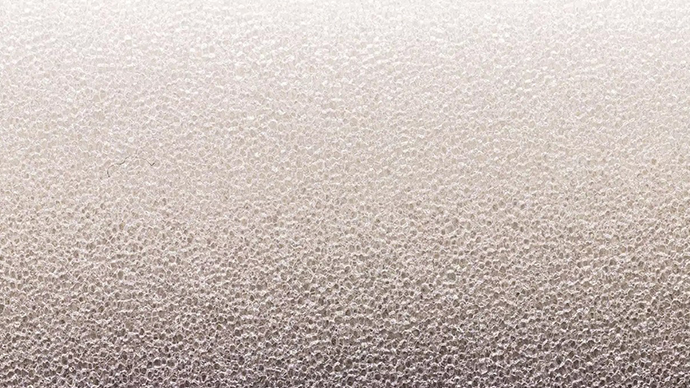Polyurethane is a plastic material that is characterized by being formed by more or less intertwined polymer chains, giving materials that range from very soft to completely rigid.
It is composed of a very versatile family of polymers, since they have multiple very different applications, for example, in paints, fibers, water-based, solvent or solvent-less reactive adhesives , molded or continuous foams, textiles, aqueous dispersions. for multiple applications, etc.
These polymers are formed from exothermic polymerization reactions of the two main components: Isocyanate and Polyol.
As a general rule, the reactive materials (polyol and isocyanate) are introduced into the mold through a premixed casting or injection at high or low pressure, forming in a few minutes the part that, after being demolded, leaves the mold free to repeat. the whole process again. The resulting piece reproduces all the details of the mold, since the polyurethane foam expands and “fills” all the empty space of the mold , thus obtaining the desired shape of the piece.
Cold Cure Flexible Polyurethane Foam
With this production process, foams are produced for seats, backrests, and headrests for automobiles and other means of transportation such as airplanes, buses or trains. You can also make pieces for furniture and for the rest area.
This type of production is increasingly chosen by manufacturers, because it does not require as much energy consumption as hot curing.
The molds for this type of flexible foam can be from aluminum to wood, including stainless steel or epoxy resin. In foam molding facilities for important sectors, such as automotive or furniture, they usually have steel or aluminum molds, while in countries or sectors with little technology or with more relaxed levels of acceptance and quality, materials such as epoxy resin can be used. or wood.
The mold is a determining factor since each one has a suitable release agent ; In the production of flexible foam released from the mold with a water-based or hybrid product, if it comes into contact with ferrous surfaces, signs of oxidation will appear in the short or medium term.
The type of cold curing flexible foam installations can be very varied, such as moving carousels or fixed molds, with mixing of components at high or low pressure. The injection type implies, in the case of high pressure, an entry of the mixed components more quickly and very little pre-reacted, and more slowly and more pre-reacted in low pressure. High pressure casting interacts with the release agent much more than low pressure mixing.
It should be noted that low pressure is disappearing, as it generates cleaning solvent residue when removing polyurethane remains after each pour. At high pressure, the operation is self-cleaning without the need for solvent.
Also mention “ memory foam ”, well known in the rest industry, although it has applications in automotive parts. It is a flexible cold-curing foam whose main characteristic is its adaptation to the body, facilitating rest on mattresses made with this material.
It is also called “memory foam” because it always slowly recovers its original shape. The release agents for this type of foam must compensate for the “suction cup” effect that originates from being a closed-pore foam with superficial stickiness. We usually work in a wide temperature range, depending on the client and its formulation, between ambient and 65ºC.
Treatments after demolding and necessary surface properties depending on the destination of the piece
In many of the pieces, anti-noise touch is required, to avoid the sound that is produced between the foam and the metal frame when we sit or move on the seat.
It is usually solved by applying subsequently, after demoulding, a product with a greasy, blue finish, to see if where it has been painted, on the surface where the noise problem resides (there are product solutions that are detected by UV and do not require of the color blue).
Within these anti-noise products there are formulations with different characteristics to cover all market needs and existing regulations. What the release agent should do is facilitate the sheathing of the pieces, providing, as far as possible, a soft and sliding touch. Currently it is achieved based on small and uniform pores, and with the help of some superficial slider incorporated into the same product, although it cannot be given a very smooth touch because products for this purpose usually cause irregularity problems. or superficial attacks.
The seats of current cars usually have presence detection sensors to warn you to fasten your seat belt. Also in higher ranges they come standard with heating pads to heat the seat in cold times. This implies that the unmolded piece must allow the self-adhesive treatments that the aforementioned pieces have to stick perfectly to its surface. The case of the presence sensor is particularly important, as it is considered a safety element and must be perfectly adhered.
Release agents are products that intervene greatly in the production process of polyurethane foam pieces. For this reason, Concentrol constantly researches new properties and formulations that adapt to the new needs of the industry. The reduction of VOC, the elimination of scale or the development of water-based products for all types of applications are a constant challenge for the technical team of our chemical company.


